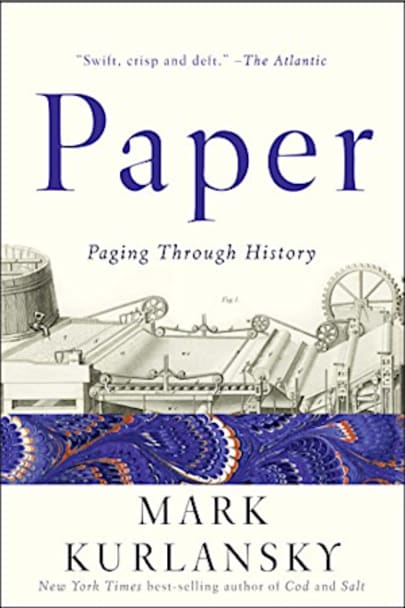From the New York Times best-selling author of Cod and Salt, a definitive history of paper and the astonishing ways it has shaped today’s world.Paper is one of the simplest and most essential pieces of human technology. For the past two millennia, the ability to produce it in ever more efficient ways has supported the proliferation of literacy, media, religion, education, commerce, and art; it … religion, education, commerce, and art; it has formed the foundation of civilizations, promoting revolutions and restoring stability. By tracing paper’s evolution from antiquity to the present, with an emphasis on the contributions made in Asia and the Middle East, Mark Kurlansky challenges common assumptions about technology’s influence, affirming that paper is here to stay. Paper will be the commodity history that guides us forward in the twenty-first century and illuminates our times.
more



This is a fascinating view of history through the lens of one technology, paper, and it’s surprisingly riveting. One of my favorite parts was the discussion of how the response to new technology has always been the same. When paper first came into use, people complained that it would erode memory and ruin oratory. Fabulous.
Very thorough review of the history of one of mankind’s most important technologies.
In some ways, Paper is exactly what it purports to be: a history of paper. That said, I would argue that it is a history of a specific type of paper and, more generally, a specific use for that paper. Which is to say that Paper is as much a history of the written word as the product itself. Much like The Silk Roads, it begins by tracing the history of early writing from east to west, for it was the Chinese and then the Mesopotanians who developed the earliest writing systems and turned natural products (barks and animal skins, chiefly) into materials for holding the recorded word. In this way, it is the history of writing, of words on paper, than the product itself.
Mark Kurlansky has reconstructed an incredibly precise history, from those barks and skins through the advent of printing, onto the production process of paper itself and then forays briefly, ever so briefly, into other uses for paper. This last is where my chief complaint lies. When thinking of all the uses for paper, writing paper – whether newsprint, book pages, or high end stationary – is but one product that comes to mind. I love books and newspapers, but where would we be without toilet paper?? (Or, let’s be honest, ladies, certain feminine hygiene products that rely on paper or paper derivatives as crucial components.) All told, and among their myriad uses, paper products are used for packaging, for hygiene, for eating on the go, for entertainment (or they were, in the heyday of paper dolls), and for cleaning sticky fingers.
Kurlansky glosses over each of these, failing to mention some altogether, and devoting the most time to paper clothes and paper money. Even these do not receive the amount of attention I would have liked. I would have been interested in a broader history of paper as it transitioned from a single use product (or maybe it never was that) to having multiple uses across different societies.
I recognize that I may be asking too much here – obviously this history of paper and writing and printing is its own volume, as Kurlansky has proven, and I have no reason to doubt that these other things, properly researched, would be their own volumes as well. In fairness to Kurlansky, I should note that my disappointment no doubt stems in part from the incredibly high bar he set with The Food of a Younger Land, which is simply perfection. In the end, though, I couldn’t help but feel that Paper either 1) didn’t live up to its potential or 2) should have had a different title. It is the history of paper, but specific paper for a specific use.
(This review was originally published at https://www.thisyearinbooks.com/2016/07/paper-paging-through-history.html)
This book gave me a whole new perspective on the stuff we call money. Really enjoyed reading it. It has a great surprise ending.
Not up to Kurlansky’s normal standards. this reads like a jumbled recitation of not very interesting facts. It was a struggle to get through, though I soldiered on out of respect for the author, whose other books (Salt, Cod, The Big Oyster, Boogaloo on 2nd Avenue) I have enjoyed immensely.
I learned a lot, as one always does from Kurlansky. Your comments category seem to mostly apply to novels.
Not nearly as readable as his books Cod or Salt, which admittedly are some of my very favorite books.
A great companion to Salt, the story of paper and its development is a fascinating study of technology meeting demand for new products.